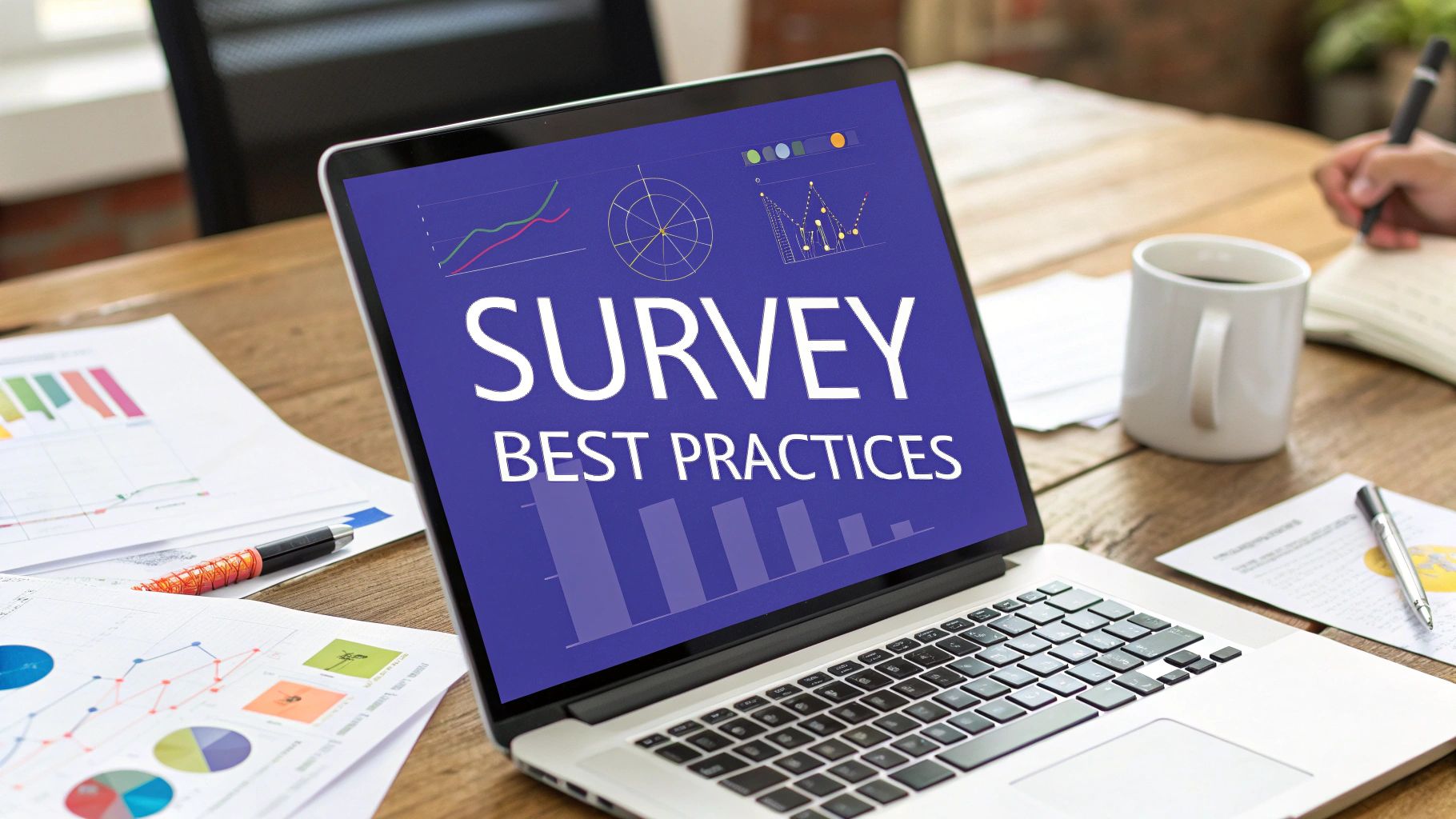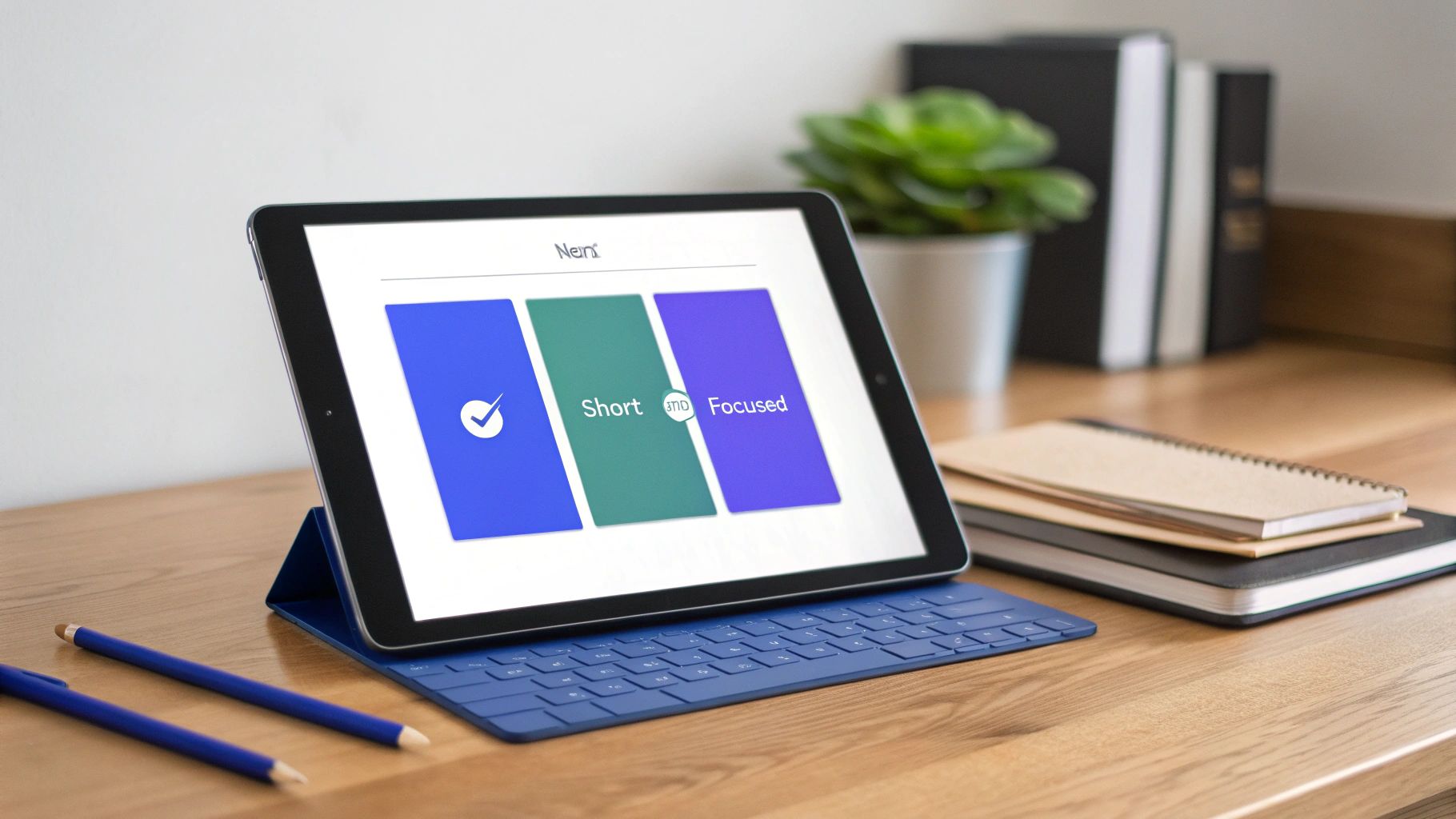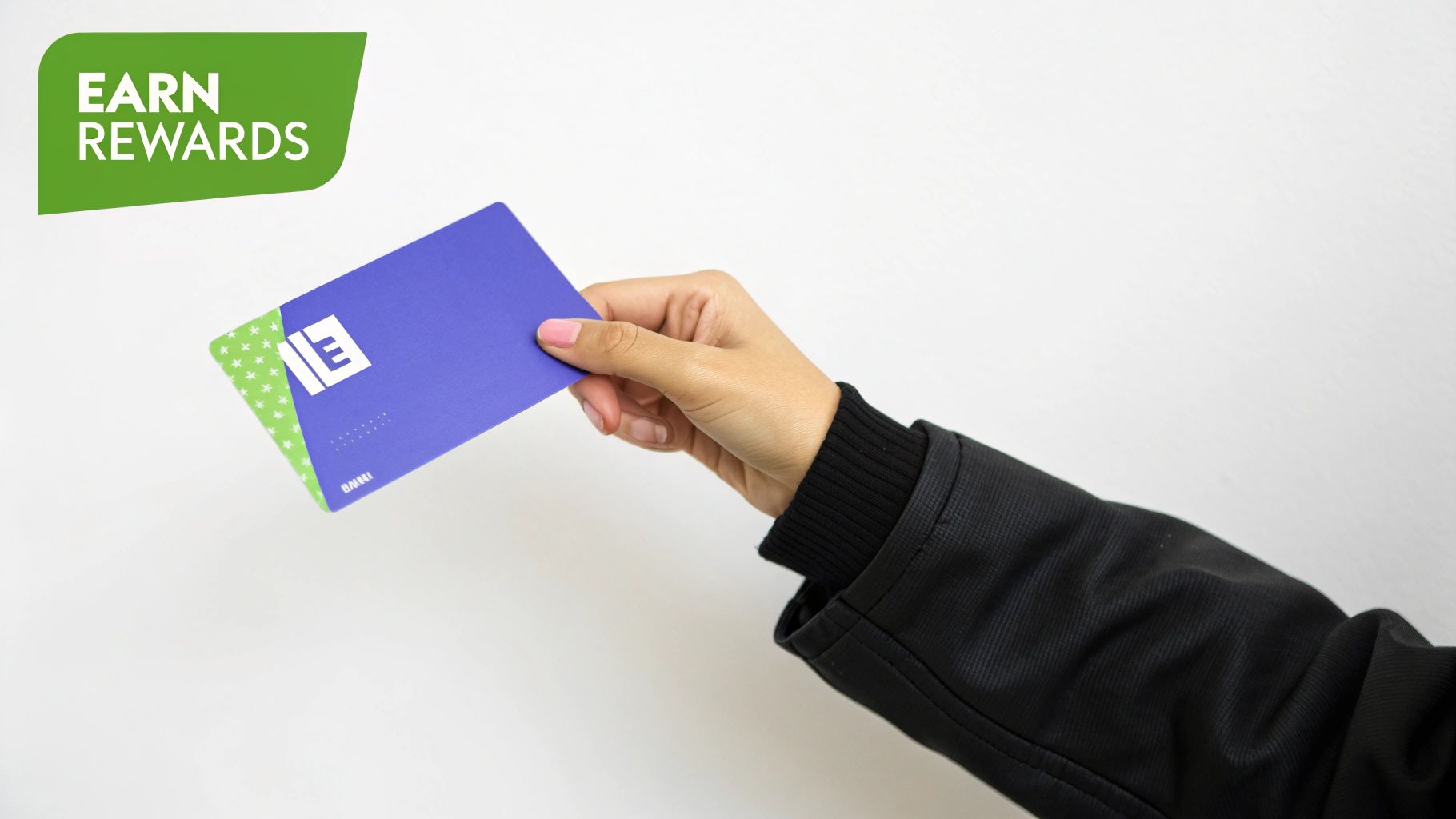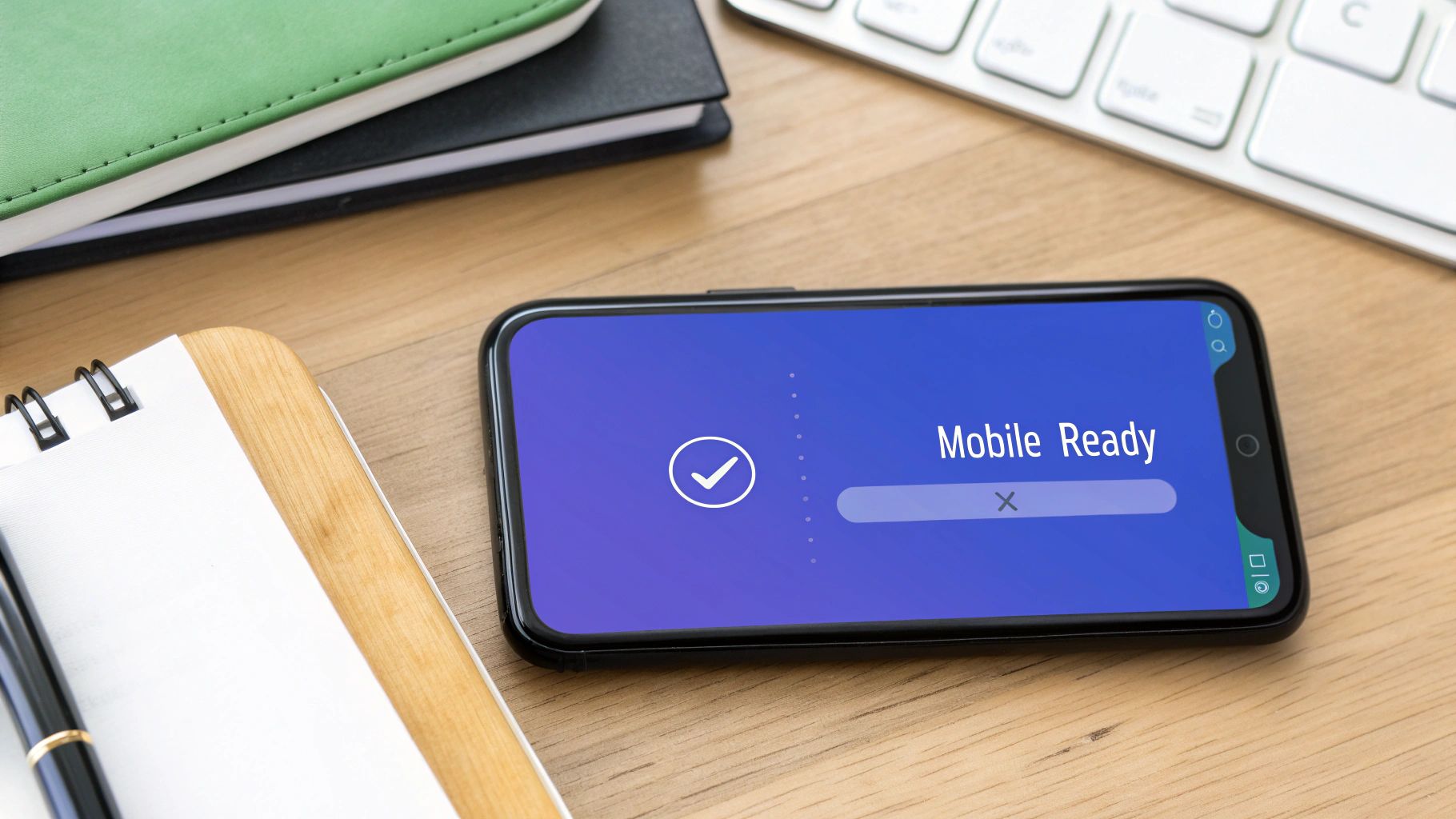8 Customer Survey Best Practices for SaaS Teams in 2025
Discover key customer survey best practices to boost responses and get actionable insights. A guide for SaaS teams using tools like Surva.ai.

Unlocking Actionable Insights: Why Your SaaS Needs a Better Survey Strategy
In the competitive SaaS landscape, understanding your customers isn't just a goal; it's the primary driver of growth and retention. While many companies collect feedback, few master the art and science of doing it effectively. The difference lies in a strategic approach grounded in proven customer survey best practices. Generic surveys yield vague answers, but a well-designed feedback loop can illuminate your product roadmap, slash churn rates, and turn satisfied users into vocal advocates.
This guide moves beyond the obvious to provide eight actionable, in-depth practices tailored for SaaS teams. We'll explore how to craft questions that elicit honesty, deploy surveys at the perfect moment, and, most importantly, turn raw data into decisions. To truly unlock these insights and refine your survey strategy, consider how customer experience mapping tools can help visualize the journey and pinpoint ideal moments for feedback.
For teams using platforms like Surva.ai, these strategies are not just recommendations. They are a blueprint for integrating intelligent feedback collection directly into your growth engine, ensuring every response pushes your business forward. Let's dive into the practices that separate high-growth SaaS companies from the rest.
1. Keep Surveys Short and Focused
One of the most critical customer survey best practices is respecting your user's time. In a world saturated with requests for feedback, the most effective strategy is to keep your surveys brief and highly targeted. This principle directly combats survey fatigue, a major cause of low completion rates and poor-quality data. By limiting your survey to only the most essential questions, you significantly increase the likelihood of receiving thoughtful, accurate responses. The ideal survey feels less like an interrogation and more like a quick, effortless conversation.

For SaaS teams, this means moving away from long, comprehensive annual questionnaires. Instead, focus on deploying micro-surveys at key moments in the user journey. For example, a three-question Net Promoter Score (NPS) survey immediately after a user successfully completes the onboarding process can provide invaluable insights into first impressions. Similarly, a quick poll asking for a satisfaction rating after a user interacts with a new feature captures contextual feedback when it's most relevant. Platforms like Uber and Netflix have mastered this by integrating simple, one-click feedback mechanisms (a five-star rating or a thumbs-up/down) directly into the user experience.
How to Implement This Practice with Surva.ai
To put this into action, first define a single, clear objective for your survey. Are you measuring post-support satisfaction or gauging interest in a potential feature? Once your goal is set, draft only the questions that directly contribute to that objective.
- Prioritize Ruthlessly: Rank your questions by business impact and eliminate any that are "nice to have" rather than "need to know." Aim for 5-10 questions that can be completed in under five minutes.
- Leverage In-App Microsurveys: Use Surva.ai to embed short surveys directly within your application. This captures feedback in-context, reducing friction and improving response quality.
- Use Conditional Logic: Program your survey to only show questions relevant to a user's previous answers. This shortens the perceived length and personalizes the experience.
- Test and Iterate: Before a full rollout, send the survey to a small internal group or a segment of beta testers to gauge its length and clarity. If it takes too long, break it into multiple, smaller surveys deployed over time.
2. Use Clear and Unbiased Question Wording
The quality of your survey data is entirely dependent on the quality of your questions. This is why using clear, simple, and unbiased language is one of the most fundamental customer survey best practices. Leading questions, ambiguous terms, or industry jargon can confuse respondents and inadvertently influence their answers, leading to skewed data that misrepresents true customer sentiment. The goal is to craft questions that are universally understood and allow the user to respond without any external persuasion, ensuring the feedback you collect is accurate and reliable.
Pioneered by organizations like the Gallup and the Pew Research Center, this principle is about eliminating bias at the source. For SaaS companies, this means avoiding self-congratulatory framing. For example, instead of asking, "Don't you agree that our latest feature update is a huge improvement?" a neutral alternative would be, "How would you rate the usefulness of our latest feature update?" Similarly, Zappos masters this by asking, "How was your delivery experience?" rather than a leading question like, "How great was our fast delivery?" This neutral framing encourages honest feedback, whether positive or negative.
How to Implement This Practice with Surva.ai
To ensure your data is untainted by bias, you must be methodical in how you write and review your questions. Surva.ai's platform can help you structure questions that yield clean, actionable insights.
- Avoid Double-Barreled Questions: Never ask about two different concepts in a single question. Instead of "Was our onboarding clear and our support team helpful?", split it into two separate questions using Surva.ai's question builder.
- Steer Clear of Absolutes: Words like "always," "never," or "every" can force users into an inaccurate answer. Frame questions with scales, such as "How often do you use this feature?" with options ranging from "Daily" to "Rarely."
- Define Ambiguous Terms: If you must use a term that could be misinterpreted, like "power user," provide a brief, clear definition directly within the question's help text or description field in your survey.
- Pre-Test Your Questions: Before launching, use Surva.ai to send your survey draft to a small internal team or a trusted customer segment. Ask them specifically if any questions were confusing or seemed biased, and refine your wording based on their feedback.
3. Choose the Right Survey Timing and Distribution Method
Even the most well-designed survey will fail if it never reaches the customer or arrives at an inconvenient time. One of the most impactful customer survey best practices is strategically selecting when and where you ask for feedback. This involves aligning your survey deployment with your customer's journey and communication preferences, which dramatically increases response rates and the quality of the data collected. Sending the right survey through the right channel at the right moment ensures your request feels relevant and unobtrusive, not like a random interruption.

This principle is widely adopted by leading companies. For instance, SaaS platforms like Slack send relationship-based NPS surveys on a quarterly or biannual basis to active users, gauging overall brand loyalty. In contrast, transactional feedback is gathered immediately. Hotels often send satisfaction surveys within 24 hours of checkout to capture fresh impressions, while Amazon typically waits a week or two after delivery before sending a product review request, giving the customer time to actually use the item. The key is matching the timing and channel to the specific type of feedback you're seeking.
How to Implement This Practice with Surva.ai
Success here requires a deep understanding of your user's behavior and the context of their interaction with your product or service. Your goal is to intercept them at a moment of high engagement or immediately following a key experience.
- Align Channel with Survey Type: Use email for longer, more detailed feedback where users can be more reflective. For quick polls or single-question ratings, leverage SMS or in-app pop-ups for immediate, in-the-moment responses.
- Time Your Transactional Surveys: Program Surva.ai to automatically trigger surveys within 24-48 hours of a key event, such as a resolved support ticket, a completed purchase, or a successful onboarding. This captures feedback while the experience is still top-of-mind.
- Be Mindful of Cadence and Time Zones: For relationship surveys sent to a global user base, schedule delivery according to the recipient's local time zone. Avoid peak "busy" times like Monday mornings for B2B audiences. Implement frequency caps in your distribution strategy to prevent over-surveying and fatiguing your most engaged users.
- Test and Optimize Channels: Don't assume one channel is best. Run A/B tests by sending the same survey via different methods (e.g., email vs. in-app) to a small segment of your audience to see which one yields a higher, more thoughtful response rate for your specific user base.
4. Implement Proper Sampling and Targeting
Sending a survey to every customer might seem comprehensive, but it often leads to biased data and wasted resources. A cornerstone of effective customer survey best practices is implementing proper sampling and targeting. This involves strategically selecting who receives your survey to ensure the results are representative of a specific user base and directly aligned with your research goals. By carefully choosing your audience, you gather higher-quality, more relevant insights that lead to smarter business decisions, preventing the noise that comes from an undifferentiated, mass-market approach.

This methodology, refined by organizations like Gallup and Survey Sampling International (SSI), ensures statistical validity. For SaaS companies, this means moving beyond blasting your entire email list. For instance, LinkedIn effectively segments its surveys by user type, asking job seekers about their search experience while polling recruiters about hiring tools. Similarly, Tesla surveys new owners about their delivery experience and separately asks long-term owners about battery performance, ensuring the feedback is highly contextual and actionable. This targeted approach guarantees that the right questions reach the right people at the right time.
How to Implement This Practice with Surva.ai
To execute this, begin by defining the specific customer segment that holds the answers to your business questions. Are you interested in feedback from power users, newly onboarded customers, or a specific industry vertical?
- Define Your Segments: Go beyond basic demographics. Use Surva.ai's integration capabilities to create segments based on user behavior, such as feature adoption rates, subscription tier, or login frequency.
- Calculate Sample Size: To ensure your findings are statistically significant, determine the appropriate sample size for your target segment. Use an online calculator to find the number of responses needed for a given confidence level and margin of error.
- Use Customer Journey Mapping: Identify key touchpoints in the customer journey where specific feedback is most valuable. Target users who have just completed onboarding, interacted with customer support, or recently upgraded their plan.
- Leverage Control Groups: For A/B testing new features or messaging, send a survey to a test group exposed to the change and a control group that was not. This allows for powerful comparative analysis to measure the true impact of your initiatives.
5. Provide Incentives and Show Value
Another cornerstone of customer survey best practices is motivating participation by offering appropriate incentives and clearly communicating the value of the feedback. Asking for a customer's time is asking for a favor; showing appreciation through a tangible reward acknowledges their effort and dramatically boosts response rates. This practice is about creating a fair exchange. You receive valuable insights to improve your product, and the customer receives something that reinforces their decision to engage with your brand.
For SaaS companies, incentives can range from direct financial rewards to exclusive product perks. For instance, a B2C app might offer a discount on a subscription renewal for completing a detailed user experience survey. A B2B platform could offer an extended trial period or early access to a new feature in exchange for feedback on a beta module. Companies like Starbucks have perfected this by integrating surveys into their loyalty programs, offering bonus stars that directly translate to free products, making the feedback loop feel rewarding and integrated into the customer experience.
How to Implement This Practice with Surva.ai
The key is to align the incentive with both your audience's motivations and the effort required to complete the survey. A five-minute NPS survey requires a smaller reward than a 30-minute deep dive into product functionality.
- Match Incentive to Effort: Calibrate the value of your incentive to the survey's length. A small gesture like a 10% discount code works for a short survey, while more involved feedback may warrant a larger reward like a gift card or significant account credit.
- Communicate Value Upfront and Post-Survey: Clearly state the incentive in your survey invitation. More importantly, follow up with participants later to share how their collective feedback influenced product changes. This shows their voice was heard, building long-term goodwill.
- Offer a Variety of Rewards: Use Surva.ai to test different incentive types. Some users may prefer a direct discount, while others might be motivated by a charitable donation made on their behalf or exclusive access to new features.
- Automate Reward Fulfillment: Connect Surva.ai with your marketing automation or CRM tools to automatically deliver the promised incentive upon survey completion. This ensures a seamless and positive experience for the user. For more strategies on motivating users, you can learn more about how to increase survey response rates.
6. Use Mixed Question Types and Response Scales
A cornerstone of effective customer survey best practices is diversifying your data collection methods within a single survey. Relying on only one question format, like multiple-choice, can lead to monotonous surveys and one-dimensional data. By strategically combining different question types such as rating scales, multiple-choice, and open-ended text fields, you gather a richer, more holistic understanding of the customer experience. This approach captures both quantitative data ("what" is happening) and qualitative insights ("why" it's happening), providing a more complete and actionable dataset.
For SaaS teams, this means designing surveys that feel dynamic and engaging. A great example is a customer service satisfaction survey that starts with a simple 1-5 star rating (quantitative), followed by a multiple-choice question about which aspect of the service was most helpful, and concludes with an optional open-ended question: "Is there anything else you'd like to share about your experience?" (qualitative). Similarly, companies like Airbnb master this by combining star ratings for cleanliness and communication with detailed written reviews, giving future guests a powerful mix of at-a-glance scores and in-depth narratives.
How to Implement This Practice with Surva.ai
Implementing a mixed-question strategy prevents survey fatigue and allows users to express themselves in the way that feels most natural to them. It's about balancing the need for structured, easy-to-analyze data with the opportunity for deep, nuanced feedback.
- Build Momentum: Start with easy-to-answer closed-ended questions (e.g., Yes/No, multiple-choice, or rating scales) to engage the user and build momentum before presenting a more demanding open-ended question.
- Use Open-Ended Questions Sparingly: While invaluable, open-ended questions require more effort. Limit them to 1-2 per survey to maximize completion rates while still capturing rich qualitative feedback.
- Maintain Consistent Scales: If you use rating scales (e.g., 1-5 or 1-10), keep the scale consistent throughout the survey. For instance, always have 1 mean "Very Dissatisfied" and 5 mean "Very Satisfied" to avoid confusing the user.
- Provide an "Out": Always include an "Other (please specify)" option on multiple-choice questions or a "Not Applicable" choice. This prevents users from being forced to select an inaccurate answer, thereby protecting your data integrity. To explore the various formats you can use, learn more about the different types of survey questions on Surva.ai.
7. Ensure Mobile Optimization and Accessibility
A fundamental customer survey best practice for modern SaaS teams is designing for every user, regardless of their device or ability. With a significant majority of users now accessing the web via smartphones, a mobile-first approach is non-negotiable. Equally important is ensuring your surveys are accessible to users with disabilities, which is not only ethically responsible but also broadens your data pool. An inaccessible or poorly optimized survey alienates a large portion of your customer base, leading to skewed data and missed insights. A truly effective survey delivers a seamless experience for everyone.
For SaaS platforms, this means going beyond just a responsive layout. Consider the user experience of someone trying to complete a survey on a small screen while commuting. Large touch targets, minimal typing, and clear navigation are essential. Companies like Typeform exemplify this with their mobile-native feel, making surveys conversational and easy to complete on any device. Similarly, government agencies adhering to WCAG 2.1 standards demonstrate how to create surveys that are fully navigable via keyboard and compatible with screen readers. This commitment ensures you capture feedback from your entire user spectrum, not just a convenient subset.
How to Implement This Practice with Surva.ai
Building inclusive and mobile-friendly surveys is an integral part of high-quality data collection. Surva.ai is designed with these principles at its core, allowing you to create experiences that work for everyone.
- Test Across Devices: Before launching, use Surva.ai’s preview mode to test your survey on various simulated screen sizes, from a large desktop monitor to a small smartphone. Check for readability, ease of navigation, and button functionality.
- Design for Touch: Ensure all interactive elements like radio buttons, checkboxes, and text fields are large enough to be easily tapped without accidental clicks. Avoid placing clickable elements too close together.
- Prioritize Accessibility Standards: Use high-contrast color schemes for text and backgrounds to aid readability for users with visual impairments. Ensure all images include descriptive alternative text (alt-text) so screen readers can convey their meaning.
- Enable Keyboard Navigation: Confirm that users can navigate through the entire survey, from the first question to the submit button, using only their keyboard. This is a critical feature for users with motor impairments.
8. Analyze, Act, and Close the Loop with Customers
One of the most impactful customer survey best practices is completing the feedback lifecycle. Simply collecting data is not enough; the real value lies in systematically analyzing insights, taking decisive action based on what you've learned, and communicating those changes back to your customers. This "closed-loop" process transforms feedback from a passive data point into an active driver of loyalty. It demonstrates that your company listens and values user input, which builds trust and encourages customers to provide high-quality feedback in the future.
Companies renowned for exceptional customer experience, like Zappos and Apple, excel at this. Zappos is known for its transparency in sharing feedback and the resulting improvements, while Apple frequently references customer feedback as a driver for changes in its iOS release notes. This approach shows customers they are partners in the product's evolution, not just consumers. It's about turning feedback into a continuous, collaborative conversation that fuels product improvement and strengthens customer relationships.
How to Implement This Practice with Surva.ai
Building a robust closed-loop system requires a commitment to action and communication. To effectively visualize and interpret your customer survey data, consider adopting robust marketing dashboard best practices to create clear, actionable reports.
- Establish Cross-Functional Teams: Create a dedicated team with members from product, support, and marketing to review survey insights regularly. This ensures that feedback is addressed from multiple perspectives and ownership is clear.
- Prioritize with Impact in Mind: Not all feedback can be acted upon immediately. Use Surva.ai's analytics to identify high-frequency issues or suggestions with significant business impact and prioritize them on your product roadmap.
- Communicate Actions Taken: Close the loop with your customers. Send personalized follow-up emails to users who provided specific feedback, or use in-app notifications and blog posts to announce broader changes. For example, "You asked, we listened: You can now export your reports to CSV."
- Track the Results: After implementing a change based on feedback, use another targeted survey to measure its impact. Did the change improve satisfaction or resolve the initial pain point? This validates your efforts and refines your process. For a deeper dive into this crucial step, you can learn more about how to analyze customer feedback on surva.ai.
Customer Survey Best Practices Comparison
From Feedback to Flywheel: Activating Your Survey Strategy
Transforming customer feedback from a passive data point into an active growth engine is the ultimate goal. Throughout this guide, we've explored the essential customer survey best practices that separate insightful campaigns from noisy, ineffective ones. The journey doesn't end when a customer clicks "submit." In fact, that's precisely where the real work, and the real opportunity, begins.
Mastering these principles means moving beyond the simple act of asking questions. It’s about crafting a strategic feedback loop. By keeping your surveys short and focused, you respect your customers' time and boost completion rates. Using clear, unbiased language ensures the data you collect is a true reflection of their experience, not a product of your own assumptions. Timing your surveys to match key moments in the customer journey, from onboarding to churn risk, allows you to gather context-rich, highly relevant insights. This strategic foundation is critical for any successful feedback program.
Key Takeaways for Immediate Impact
If you remember nothing else, focus on these core pillars:
- Precision is Paramount: Vague surveys yield vague answers. Every practice, from proper sampling and targeting of specific user segments to using a mix of question types like NPS, CSAT, and open-ended fields, is about increasing the precision of your insights.
- Action is the Antidote to Apathy: Customers will stop providing feedback if they believe it disappears into a void. The single most powerful practice is to analyze, act, and close the loop. Acknowledge the feedback, communicate the changes you're making because of it, and show users their voice has a tangible impact on your product roadmap.
- Accessibility Drives Inclusion: A truly representative sample comes from ensuring everyone can participate. Mobile optimization and adherence to accessibility standards are not just technical details; they are fundamental to creating an inclusive and effective feedback channel.
Your Next Steps: From Theory to Practice
The path to becoming a genuinely customer-centric SaaS organization is built one survey at a time. Don't feel overwhelmed by the need to implement all these customer survey best practices at once. Instead, pick one area to improve in your very next survey campaign.
- Review Your Last Survey: Did it follow the principle of being short and focused? Could any questions have been worded more neutrally?
- Plan Your Next Distribution: Are you timing it based on a specific user action or journey milestone?
- Commit to Closing the Loop: Before you even send the survey, create a plan for how you will analyze the results and communicate back to your respondents.
By consistently applying and refining these techniques, you build a powerful feedback flywheel. Each survey provides insights that fuel product improvements and enhance the customer experience. This, in turn, fosters loyalty and encourages more users to provide even higher-quality feedback in the future. This is how you embed the voice of the customer directly into your operational DNA, driving retention, innovation, and sustainable growth.
Ready to put these customer survey best practices into action without the technical overhead? Surva.ai is built to help SaaS teams deploy intelligent, targeted surveys and turn feedback into fuel for growth. Start your free trial today and launch your first expert-level survey in minutes at Surva.ai.


